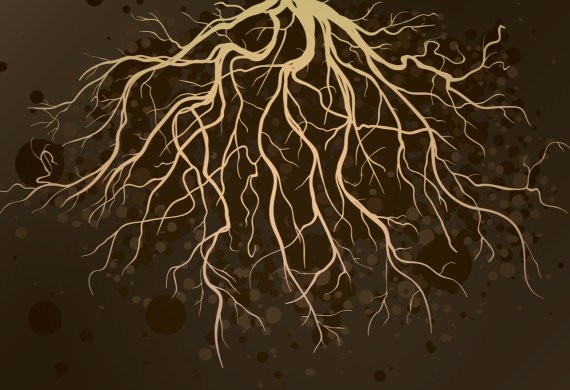Crops and other plants actively manage the species of moulds, bacteria and nematodes in the soil. Organic farmers give them a helping hand.
The days when we thought plants just waited passively in the soil for whatever would happen to them are long gone. There is an entire community of numerous soil organisms beneath the surface, and plants are fully involved in that community through their roots. Scientists are only just starting to map all those interactions.
Field trials
At the start of the year, Paula Harkes received a doctorate for her study on the effect that various plants have on the mix of moulds, bacteria, nematodes and protozoa in the vicinity of their roots. Modern molecular techniques enable scientists to get a detailed picture of that soil community. In field trials, she also looked at whether there are differences between organic farming and conventional farming.

More complex soil life
The first conclusion is that there are differences and they can be substantial. For example, organically farmed barley has more diverse soil life in all four of the investigated groups of organisms. There is also more interaction between the different groups. The next question is whether that is due to the plant or the farmer’s soil management methods. That question received a clear answer in trials with peas.
Organic farming led to a more complex soil life here too but much of that effect could be attributed to the influence of the plant. There were clear differences between the mould and bacteria communities around the roots and elsewhere in the soil. That effect was greater than the soil management effect. Furthermore, long-term organic soil management resulted in much lower numbers of the parasitic root-knot nematode on the pea plants.
More robust ecosystem
Does that mean organic farming is better? ‘We certainly see great diversity in the soil life in organically farmed soils,’ says Harkes cautiously. ‘I personally think more biodiversity is better. More soil organisms means more interaction and consequently a more robust ecosystem.’ But we can’t deduce generally applicable rules from this. Harkes: ‘I think it’s different for each plant species. Each plant is unique and that requires a plant-specific management solution.’
Harkes made another important discovery. When creating a molecular picture of soil life, it is not enough to just look at the total DNA. Much of that DNA comes from organisms that are not active, as becomes clear when the RNA (the ‘active form’ of DNA) is included as well. ‘Many organisms are essentially in sleep mode and don’t play an active role in the functioning of the ecosystem.’

 Image: Shutterstock
Image: Shutterstock